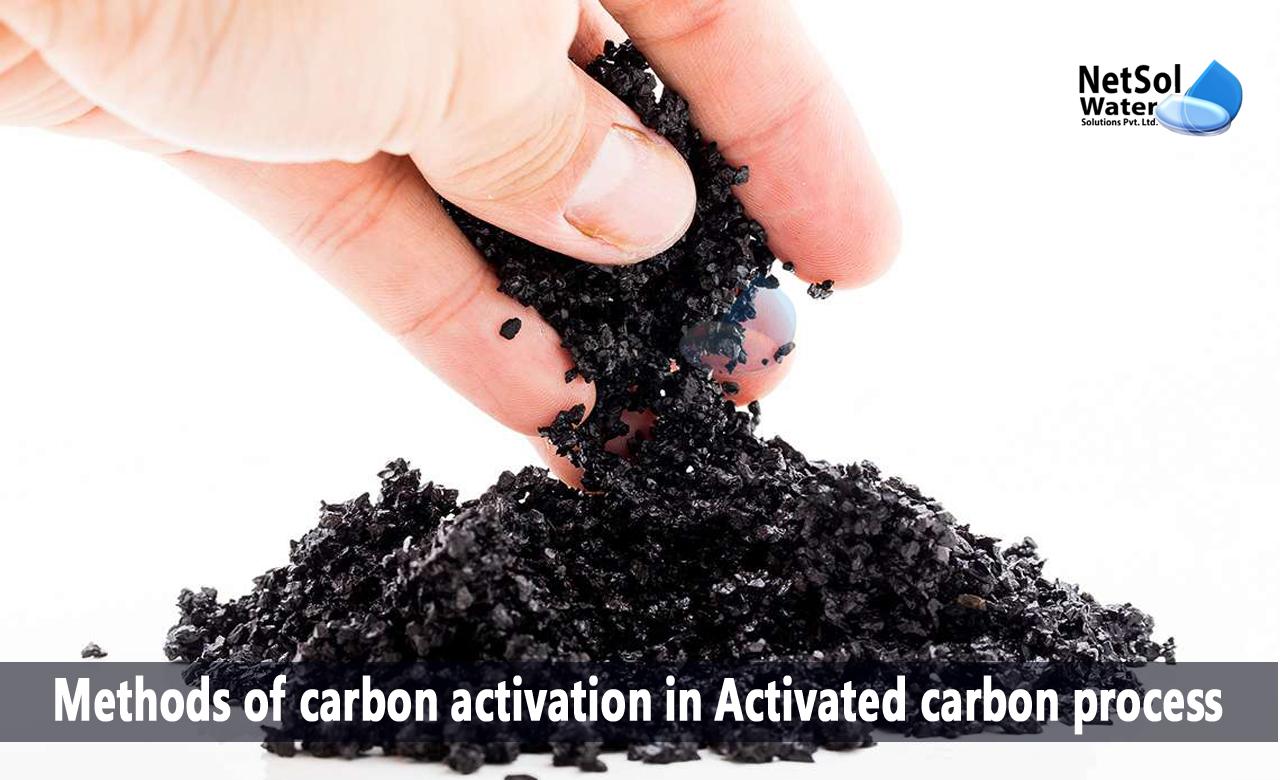Since, life cannot exist without water, it is crucial to use it wisely and conserve it whenever possible. Wastewater is processed in several locations to provide clean water. Utilizing activated carbon for wastewater treatment that uses adsorption is one such approach.
This is how molecules, atoms, or ions attach to the activated carbon particles' surface. In order to guarantee a clean and filtered output, Netsol Water provides a selection of ready-to-use solutions for wastewater treatment.
Methods of carbon activation in activated carbon process
Prior to usage, carbon can be activated using two major techniques: chemical activation and thermal or steam activation.
Anything with high carbon content, such as coconut husks and shells, wood, bamboo, willow peat, coal, macadamia nut shells, lignite, and others, serves as the basis material. Some basic materials are more appropriate than others for carbon activation methods.
Chemical Activation
The most frequent substances employed in the chemical activation of carbon are potassium hydroxide, phosphoric acid, and zinc chloride. The highest porosity levels of activated carbon have been reported to be produced using these. It's crucial to maintain high porosity since the efficiency of activated carbon rises with porosity.
To combine the chosen material with the concentrated solution of the dehydrating agent, the material is first milled or crushed to obtain the necessary particle size. It is then dried and heated between 400°C and 700°C in an inert environment. In order to prepare it for usage, it is then dried off, extracted from the slurry, and washed with water to eliminate the activation agent.
Steam Activation
In the process of steam activating carbon, the starting material is first burned to a char, after which it is placed in a furnace and heated with steam without oxygen to temperatures, between 927°C and 980°C. The layers of carbon are peeled off to reveal expanded interior holes on a carbon skeleton at this stage, which sees the removal of all volatile chemicals.
The ash content of the activated carbon is removed after cooling by either washing it with water or acid. Carbon is produced when acid is utilized, and it is properly washed with water.
How does wastewater treatment use activated carbon?
Clean water for a variety of uses can be produced by treating industrial and municipal wastewater, to eliminate contaminants and make it potable. Activated carbon is typically employed in this process at the very end, following steps like flocculation and sedimentation.
After all suspensions have been eliminated, the water is frequently put through a few activated carbon filters. This is essential to ensuring that each filter is loaded to its maximum capacity, and that any contaminants that weren't successfully absorbed in one filter can be in the subsequent one, and so on.
The resulting clean water can be utilized in aquariums and swimming pools, among other things, or as drinking water. The activated carbon filtering system that will be employed is determined by the intended application of the treated water.
Chlorine removal
As a potent germicide, chlorine is frequently used to disinfect public water sources. However, consuming it in bigger amounts might have negative effects and impart a bad flavour to the water. Activated charcoal can help with this because it is particularly effective at removing chlorine from water. Therefore, the type of carbon that is most frequently utilized in large water treatment filters is granular activated carbon.
Removing organic material
Its particle form is a characteristic of activated carbon that is utilized to remove organic material from wastewater. Organic matter, which includes decomposing plant life and artificial sources, is adsorbed onto the activated carbon filter.
The best filter is made of carbon with microscopic holes because it prevents any impurities, from passing through. The material used to create the activated carbon filter can interact chemically, with the organic materials in the water, depending on the water purification requirements.
What do we offer?
A cheap yet effective method for treating wastewater is activated carbon. Netsol Water is your willing and competent partner if you're looking for filters, and other water treatment equipment. We'll provide you with a range of choices and suggestions for the best course of action.



